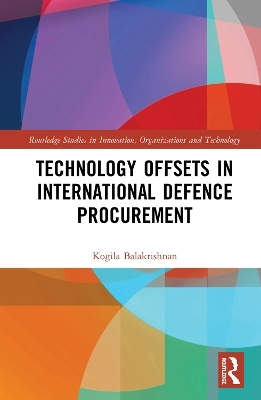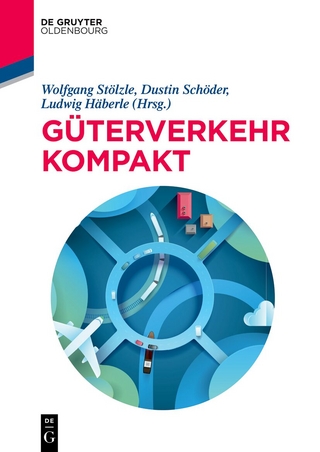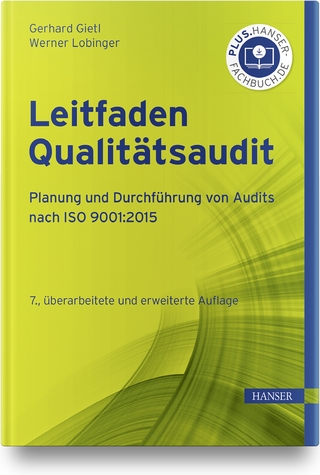
Technology Offsets in International Defence Procurement
Routledge (Verlag)
978-0-367-58695-9 (ISBN)
Technology offsets, a nonconventional international trade-financing tool, is used by governments (buyers) to obtain industrial and technological benefits from companies (sellers) as part of international procurement. Offsets deals involve billions of dollars and this practice exists in around 80 countries around the world. Though offsets is a popular practice in defence, it is increasingly gaining popularity in civil sectors. Offsets is often tainted by controversy and receives bad press. What then makes offsets popular? Governments claim that offsets delivers technology and knowledge transfer, skills in high technology sectors and employment, and offsets expands export opportunities through participation in OEM supply chains. For companies, offsets is mainly employed as a tool to obtain a competitive edge and win sales in international business. In the past, there have been mixed results of case studies on the impact of offsets successes and failures.
Considering the mismanagement of globalisation, unfair trade agreements and current political and economic discontent, there is a stronger need for governments and companies to use vehicles such as offsets to create a relationship of trust and commitment for sustainable development. This book fills the gap in offsets and focuses on how to manage offsets more effectively by addressing issues of strategy, policy and implementation, technology management, governance and risk.
Technology Offsets in International Defence Procurement is designed for those studying international procurement, international trade, international business, technology management, defence policy and industrial policy. This book will also be of interest to practitioners and policy makers in both government and industry.
Kogila Balakrishnan is currently the Director for Client and Business Development (East Asia) at WMG, University of Warwick. She began her career in the Malaysian civil service where she was instrumental in the development of national offsets policy and subsequently retired as the Under Secretary for Defence Industry in 2016. Kogila holds an BA (Hons) from University of Malaya, LLB (Hons) degree from the University of London and an MA in Strategy and Diplomacy from the Malaysian National University. She won a Fulbright Scholarship in 2003 and held a Chevening Scholarship during 2004–2007, when she obtained her PhD in offsets and technology policy from the Defence College of Management and Technology, Cranfield University, UK Defence Academy. She presently holds an Adjunct Professorship at the Malaysian National Defence University and continues to advise governments and organisations on offsets policy. Kogila is married and has three wonderful children.
Foreword; Acknowledgements; List of Abbreviations; PHASE I; Chapter 1. An Introduction to Offsets; 1.1 Setting the Scene; 1.2 Why the need for this book?; 1.3 Global Offsets Obligation and Trend; 1.4 Offsets in International Procurement; 1.5 Key research on Offsets; 1.6 Costs and Benefits of Offsets; 1.7 Offsets Stakeholders and their Views; 1.8 The need for an Offsets Framework; 1.9 Structure of the Book; Chapter 2. Key Aspects to Offsets Management; 2.1 Background; 2.2 Nonconventional International Trade Financing (NITF); 2.3 How have Offsets Projects Evolved?; 2.4 Origin of Offsets; 2.5 Understanding Offsets Terminologies; 2.6 Offsets Case Study: Use of Offsets Multipliers; Chapter 3. Theoretical underpinning to the study of offsets; 3.1 Introduction; 3.2 Technology Self-sufficiency Leading to Independence in Defence and Security; 3.3 Industrialisation, or 'Take-Off'; 3.4 Reducing the Technological Gap; 3.5 Building Dynamic Capability; 3.6 Industrialisation through Clusters; 3.7 Sustaining fi rm competitiveness through technological absorption capability (TAC); PHASE II; Chapter 4. Role of Government: Offsets Strategy and Policy Formulation: Development Phase; 4.1 Background; 4.2 Role of Offsets in International Defence Procurement; 4.3 The Offsets Management Cycle (OMC); 4.4 Offsets Strategy Development; 4.5 Offsets Policy Formulation; 4.6 Responsibilities for Offsets Policy Formulation; 4.7 Determining Offsets Objectives; 4.8 Identifying Stakeholders; Chapter 5. Role of Government in Offsets Implementation: Pre-, During and Post-contract Phase; 5.1 Background; 5.2 Role of Offsets Management Authority (OMO); 5.3 Offsets Implementation Process; 5.4 Common Issues in Offsets Implementation; Chapter 6. Sellers' Offset Strategy and Implementation; 6.1 Background; 6.2 Sellers' Perception of Offsets; 6.3 Essential Features of Offsets in a Company; 6.4 Sellers' Offsets Management Life Cycle; 6.5 Five Forces that Influence Sellers' Successful Offsets Strategy and Delivery; 6.6 Issues to Consider for Sellers when Managing Offsets; PHASE III; Chapter 7. Technology, Competitiveness and Offsets Valuation; 7.1 Background; 7.2 Defining Technology; 7.3 Elements of Transfer of Technology in Offsets (TOT); 7.4 Technology Acquisition and Offsets – Justification form National Competitiveness; 7.5 Technology Valuation, Process and Approach; 7.6 Critical Factors for Successful Transfer of Technology through Offsets; 7.7 Case Study; Chapter 8. Transparency in Offset; 8.1 Is Offsets a Corrupt Practise?; 8.2 What Does Transparency International (TI) say about Offsets?; 8.3 Possible Malpractise in Offsets Dealings; 8.4 Defence Sales and Allegations of Corrupt Practice in Offsets; 8.5 Recommendation on Best Practises for Greater Offsets Transparency; Chapter 9. Managing Offsets Risks; 9.1 Awareness to Risks in Offsets; 9.2 Evaluating Risks in Offsets Management Life Cycle: Buyer Perspective (Offset Oblige); 9.3 Evaluating Risks in Offsets Management Life Cycle: Seller Perspective (Offsets Obligor); 9.4 Case Study; Chapter 10. Conclusion and Future of Offsets; 10.1 Offsets is Here to Stay; 10.2 Future of Offsets
| Erscheinungsdatum | 01.07.2020 |
|---|---|
| Reihe/Serie | Routledge Studies in Innovation, Organizations and Technology |
| Verlagsort | London |
| Sprache | englisch |
| Maße | 156 x 234 mm |
| Gewicht | 453 g |
| Themenwelt | Sozialwissenschaften ► Politik / Verwaltung |
| Wirtschaft ► Betriebswirtschaft / Management ► Logistik / Produktion | |
| Wirtschaft ► Volkswirtschaftslehre ► Makroökonomie | |
| ISBN-10 | 0-367-58695-9 / 0367586959 |
| ISBN-13 | 978-0-367-58695-9 / 9780367586959 |
| Zustand | Neuware |
| Haben Sie eine Frage zum Produkt? |
aus dem Bereich


